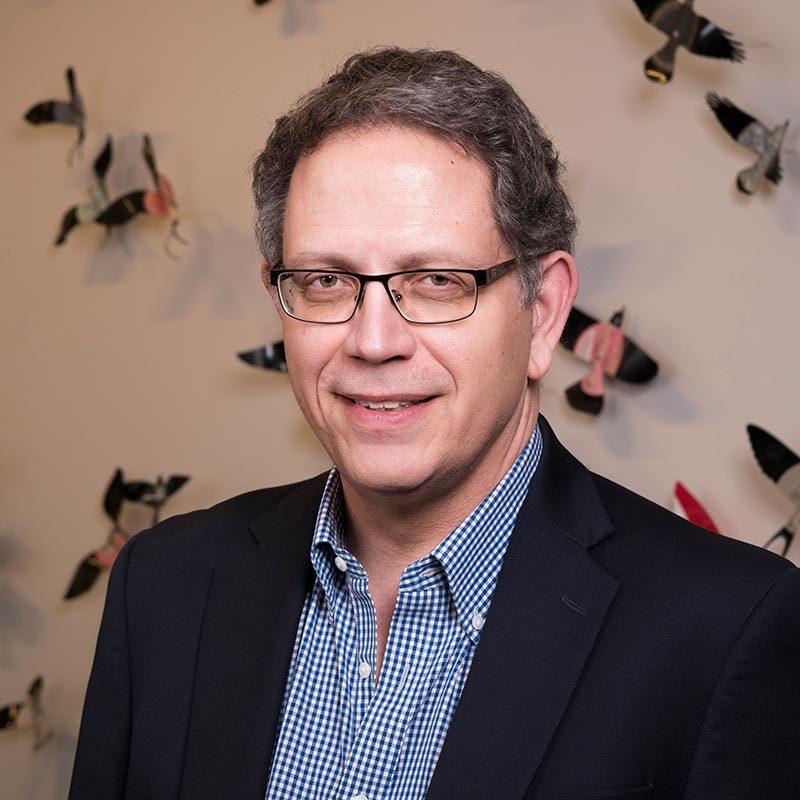One of the tasks of leadership is to ensure that the organization's external narratives -- the set of values and aspirations they project to the world -- are lived out within the organization as well, says David Anderson Hooker, an experienced mediator and expert on conflict resolution.
As a consultant, Hooker often works with organizations to do what he calls a "narrative alignment," making sure that their external and internal values are in sync.
"We do an alignment so that the narratives and values that are projected out into the world are also the ways that you organize, both personally and professionally," he said. "How do leaders organize their staff? How do they organize their personal life? Do their relationships, resource allocation and the structures in their life align with the values that they are committed to in the world?"
Doing such work -- making sure that an organization lives up to its own story -- is difficult and challenging, but not doing it is a failure of leadership, he said.
"If you have to avoid these kinds of conversations, if you have to run the organization in a way that allows you to avoid the places where people are feeling unaligned, misled, deceived, unconsidered, then you're not really doing leadership," Hooker said. "You're just in charge."
Hooker is a professor of the practice of conflict transformation and peace building at the Kroc Institute for International Peace Studies within the University of Notre Dame's Keough School of Global Affairs. He has worked for more than 25 years as a mediator, community builder, scholar and advocate.
He has a J.D. from Emory University School of Law and an M.Div. from Emory's Candler School of Theology. Prior to his appointment at Notre Dame, he was a senior fellow for community engagement strategies at the University of Georgia's J.W. Fanning Institute for Leadership Development. He has also served as assistant attorney general for the State of Georgia.
While at Duke Divinity School recently to deliver a lecture at the Center for Reconciliation, Hooker spoke with Faith & Leadership about his work in mediation, conflict resolution and peace building. The following is an edited transcript.
Q: Give us an overview of your work as a mediator.
I've been doing mediation for about 25 years. It started with family and neighborhood disputes, and when I was in graduate school, even roommate disputes. You know -- "They don't keep their room clean enough"; "they party too loud." That kind of thing.
I was at the University of Massachusetts in 1986 when they had a riot. It started out about the Red Sox and the Mets, the World Series where Bill Buckner boots the ball. But it became a race riot.
I had the opportunity over six months to talk to smaller groups and eventually to the whole campus, to converse and to redesign a relational covenant for the university, and I realized that's really what I love.
I do multiparty public policy kinds of disputes. For example, an environmental dispute that impacts multiple communities and businesses and agencies, or the storage and disposal of nuclear materials and waste that will involve corporate interests, local businesses, environmentalists and others.
Some of my work has become more postwar, post-disaster community building, which includes conflict resolution but also trauma healing and restorative justice. Mediation is just one model for healing relationships and communities. If you add some other components, you can do a more holistic job of healing and bringing communities back to health and wholeness.
In my consulting work, I do what I call "narrative alignment." Both organizations and individuals have certain narratives. Sometimes it's imbedded in an organization's vision statement or mission statement. And the question is, how are those values lived out not just in the world but also within the organization?
If you have a commitment to social justice in the world, how does that align with how you pay people? Do you have pay equity and a living wage and open systems where everybody has a sense of voice and contribution within the organization?
We do an alignment so that the narratives and values that are projected out into the world are also the ways that you organize, both personally and professionally. How do leaders organize their staff? How do they organize their personal life? Do their relationships, resource allocation and the structures in their life align with the values that they are committed to in the world?
Q: Is it common that those narratives are out of alignment?
Yes. There's research that says as much as 85 percent of employees in many corporations consider themselves unengaged or actively disengaged at work. My sense is that productivity, creativity, commitment and innovation all are more likely when employees see that the organization is living out the values that they've committed to.
Many people who work in helping professions are very mission driven. They can get disillusioned if they have to go to work every day and not live into the values of the mission that they signed on to. Just by giving them the opportunity to live into those values, you've actually given them a raise.
Q: So it's challenging for any organization to keep those narratives in alignment?
It is.
A lot of people who are in charge, who are in authority, aren't doing leadership work. Leadership is about taking the assets that you have to resolve the problems that have been presented to you.
But if you have to avoid these kinds of conversations, if you have to run the organization in a way that allows you to avoid the places where people are feeling unaligned, misled, deceived, unconsidered, then you're not really doing leadership. You're just in charge.
It's not for the faint of heart. This work isn't for everybody.
Q: You said that mediation is just part of this whole process. What are the different pieces in conflict resolution?
I don't think about it as resolution as much as transformation. If you think about it as conflict resolution, you're thinking about just addressing a particular episode of conflict: "How do we manage this so we can go on?"
Many times, that results in compromise of some sort: I'll give a little bit, you'll give a little bit, and we'll find a way to go on. But neither one of us is completely satisfied.
That is a difficult way to build long-term relationships and deep commitments -- if all of us are just willing to go along.
What are the other issues?
One is restorative justice. Most conflicts have some origin months or years ago, some even decades or centuries ago. So if you only deal with this one little episode, you're really dealing with a symptom.
At some point, you have to go back and start thinking about the source. John Paul Lederach talks about the epicenter of the conflict, as opposed to the episode. Like when you're having an earthquake, it might be felt far away from the epicenter, the place where it's actually happening.
So how do you get closer and closer to that place, to the epicenter of a conflict?
A lot of that is inside the stories, the unconscious narratives that drive our lives. We have to go back and unpack those and ask, "Who told you that that's the only way it could be? How did you learn that, and what might be some other options?"
The thing is, the beauty of it is, all the stories are true, but they didn't necessarily happen that way. What makes something true for someone is that you organize your life around it.
But you can organize your life around a different story. You have options.
Usually what has happened is that a particular power regime has supported one story over another, and that story gets handed down as more true. So you adopt it as though it's true, but it really is just supporting a particular set of power relationships.
Q: And you think it's true not only just for you but for everybody. You don't even realize that other people have a whole different story.
People have different stories, and what we try to do is impose a particular story. Once I have a story, everybody is a character in my story, and in my story your character only can act a certain way.
So if you act any differently, then you and I have a problem, right?
That's part of the work -- how do we uncover those narratives?
It's particularly an issue for leadership. Some people say, "If I'm a leader, I'm supposed to have answers. I can't go to people and ask them questions."
That's their narrative of "leader." It's like the old joke that men don't ask for directions. Leaders don't ask for directions.
Edgar Schein wrote a book called "Humble Inquiry." It describes a model of leadership based on being willing to acknowledge that other people have a significant amount of information and capacity to contribute. And if you are willing as a leader to humble yourself enough to believe that and to ask others, that is a powerful way of doing leadership.
Q: Some of your work is about healing historical harm, about interrupting the multigenerational transmission of trauma. Tell us about that.
A lot of it is in the narratives. I'll give you a personal example.
When my mother was 9 or 10, she and some of her friends were swimming in a pond in south Georgia, and one of her friends drowned. And she decided it was never safe to swim.
So we, her children, could be members of the Boys & Girls Club but not the Y, because the Boys & Girls Club didn't have a pool. We would never go over there and try to learn how to swim. It wasn't until I went to college that I had an opportunity to learn how to swim.
But I was really proud of my mother when she was in her mid-50s and learned how to swim. She recognized that she had been living inside this story that said people who swim die. And then she could change that narrative, and once she did, she gave everybody else a certain kind of freedom.
This is how multigenerational trauma gets passed down. They don't have to keep telling the story; they just give you the behavioral pattern that accompanies it. You never know why we don't go to the pool. You don't know why we don't swim; you just know that we don't.
In the same way, people get traumatized when they hear stories about different kinds of people and how they should avoid certain kinds of people. That makes it so much easier for neighborhoods to be segregated, in a variety of ways -- not because of personal experience but because that is the relational pattern that happens over multiple generations.
These narratives have been passed down over generations. So how do we unpack them in ways that allow people to choose? Because with most of them, we got the story so early that we never had the chance to investigate it for ourselves. It's just the way things are.
So you organize your life as though it's reality.
But you have a choice. And if you realize there are choices, do you have a preference? What would it take for you to choose this other story versus the one that you've been living in?
So we start looking at the organizational level, to allow people to live more clearly into their preferred story. But you have to name those stories. You have to start both noticing what the old story is and helping them name a preferred new story, and then figure out what would it take, in terms of support, to begin to make the new story, the preferred story, the habit.
Q: What's the role of church in this work -- in the work of reconciliation and peacemaking, and in the process you're talking about?
The church still is one of the places where people accept the possibility of a hopeful narrative. It's hard to listen to the titans of industry try to sell you a hopeful narrative, because you know that at the end, they're going to say, "This hopeful narrative is available for three payments of $9.99, plus shipping and handling. If you want a double dose of hope, pay separate shipping charges."
So where are the places where it's still possible to name a hopeful narrative and build toward it?
The church is one place people still look to for that. So it's important to equip churches to both do the narrative work, so that they can understand what the competing narratives are, and then share the hopeful narrative and live into it.
Even if I never heard you preach, I can watch how you live. Is your church a place that pays a living wage? Is it a place where young people and women and poor people and formerly homeless people have a voice? A place where they welcome people and don't make a hierarchical distinction between those who were once imprisoned and who are not anymore?
Just imagine that's what people are seeing. It wouldn't matter if they ever heard one of your sermons. If they saw that and noticed it, people would say, "Have you been to First Presbyterian? On Tuesday nights they do this really interesting thing."
Yet many churches have been hijacked by a fixed narrative of rigidity, superiority and exclusion that condemns people. There are competing narratives at war inside the larger church worldwide, and that piece has to get resolved.
There has to be a lot of internal work so that people can distinguish what I call the "realm of God" game versus the "world" game. Any game is made up of rules. There are things that you do inside a game that only make sense inside the game structure. Like throwing a ball through a basket only makes sense inside the game structure, right?
Forgiveness and reconciliation only make sense inside the realm of God game. In the world game, if somebody hurts you, then you cut them off, you throw them out. There's no space for re-engagement, for dialogue, for experiencing.
But when, inside the church, people see the rules of the world game and not the rules of the realm of God game, they get confused. They're like, "Oh, those two are the same."
So because I play the world game six days a week at work, then I don't have to get dressed up and go to church on Sunday.
The role of the church should be to provide a counternarrative.
Q: How can a local congregation do the kind of work you're talking about?
This is a shameless plug. But " Transforming Historical Harms," a manual that I wrote with Amy Potter [Czajkowski], explains how you do narrative at the local level, how you help people begin to share stories and use them for healing and connecting and taking action in your community.







